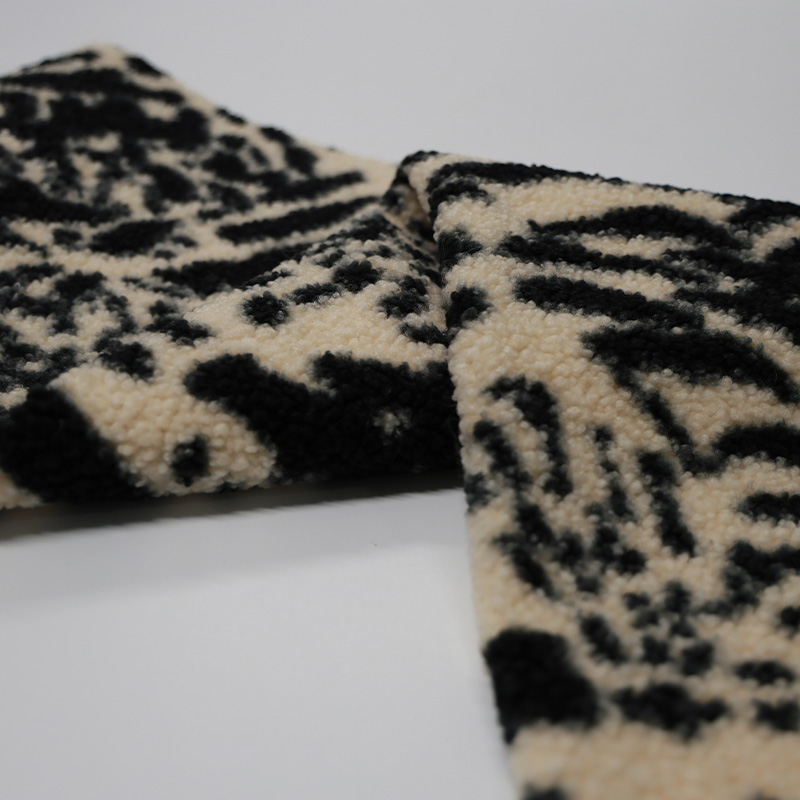











Curled velvet, a fabric renowned for its lush texture and timeless elegance, has enjoyed a fluctuating yet enduring presence in both the fashion and home textiles markets. This market analysis aims to explore the various factors that influence the demand for curled velvet, balancing its ups and downs to provide a comprehensive understanding of its current and potential future trends.

Ups: Factors Driving Demand
Aesthetic Appeal and Versatility: Curled velvet's distinctive texture and luxurious appearance make it a popular choice for high-end fashion and home decor. Its ability to be dyed in various colors and patterns allows for endless customization, catering to diverse tastes and styles. This versatility ensures that curled velvet remains relevant across different seasons and trends.
Comfort and Warmth: The fabric's softness and ability to retain heat make it ideal for clothing and home textiles in colder climates. Its plush texture also provides a tactile pleasure that enhances the overall comfort and experience of wearing or using curled velvet products.
Designer Endorsement: High-profile fashion designers and interior decorators often feature curled velvet in their collections, driving consumer demand for the fabric. Its association with luxury and sophistication appeals to those seeking unique and statement-making pieces for their wardrobes and homes.
Cultural and Historical Significance: Curled velvet has a rich history, often being associated with royalty and opulence. This cultural significance continues to influence its popularity, particularly in markets where tradition and heritage play a significant role.
Downs: Challenges Facing the Market
Price Sensitivity: Curled velvet's high production costs often translate into higher retail prices, making it less accessible to budget-conscious consumers. This can limit its market penetration, especially in price-sensitive segments.
Maintenance and Durability Concerns: The fabric's delicate nature requires special care when cleaning and handling. Its susceptibility to crushing and creasing can also detract from its aesthetic appeal, necessitating frequent steaming or ironing. These factors can deter consumers who prefer low-maintenance fabrics.
Seasonality and Trends: While curled velvet's aesthetic appeal is timeless, its popularity can be influenced by seasonal trends. Fashion trends that favor lighter, more breathable fabrics during warmer months can temporarily reduce demand for curled velvet.
Competition from Alternatives: The market for luxury fabrics is highly competitive, with alternatives such as silk, satin, and faux fur offering similar aesthetic appeal with potentially lower maintenance requirements. This competition can impact curled velvet's market share.
Balancing the Market
To maintain a healthy and sustainable market for curled velvet, manufacturers and retailers must navigate these ups and downs by focusing on innovation, quality, and consumer preferences. Strategies such as developing more durable and easier-to-clean versions of the fabric, offering diverse color and pattern options, and targeting niche markets can help mitigate the challenges faced by the material.
Additionally, understanding consumer behavior and trends is crucial. By analyzing purchasing patterns and preferences, manufacturers can better anticipate changes in demand and adjust their production accordingly. Collaboration with designers and interior decorators can also help drive demand for curled velvet, leveraging their influence and expertise to create appealing and relevant products.
In conclusion, curled velvet's presence in the fashion and home textiles markets is marked by both strengths and challenges. By balancing these factors and continuously adapting to consumer needs and market trends, the fabric can continue to thrive and remain a cherished choice for luxury and sophistication.